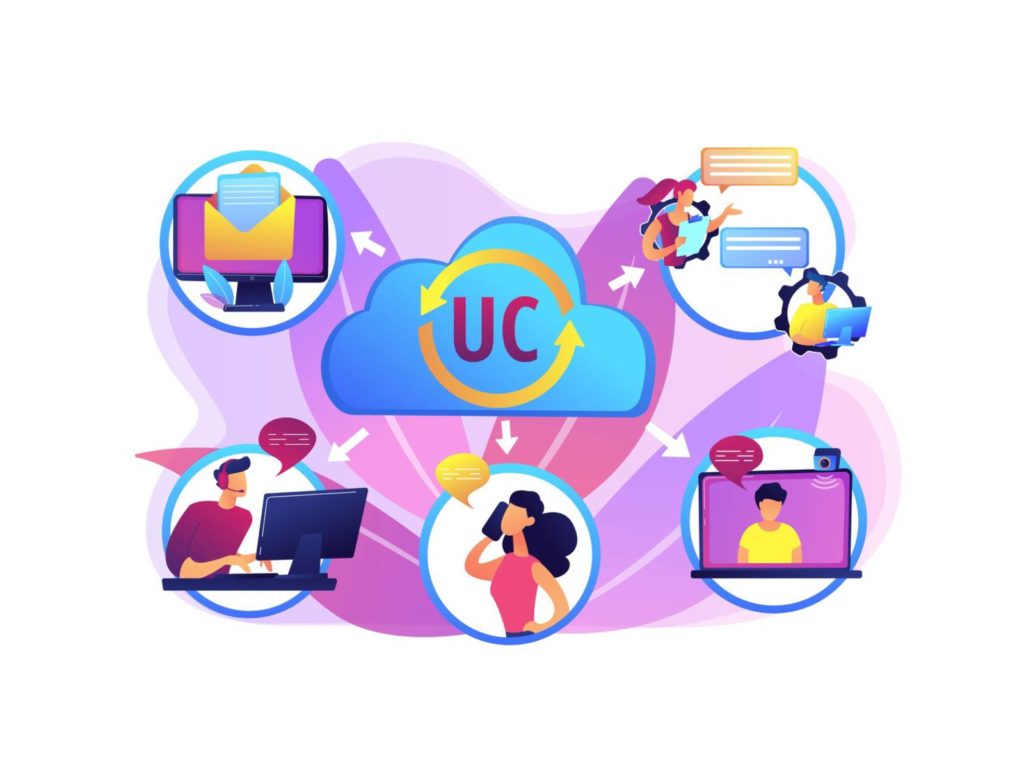Cloud solutions are quickly taking over the contact center industry. A growing dependence on apps, remote work, and real-time shared data is creating demands that on-premise solutions can’t meet. To avoid these limitations and the impact they have on results, 83% of enterprise-level businesses are predicted to start using a cloud system by the end of the year.
Despite this growing acceptance, many businesses remain cautious about cloud migration. A full contact center transition to the cloud might appear daunting and more than enough to keep businesses from making the switch. Each manager has their own reasons to continue using a legacy solution, but there are also cloud migration roadblocks that are common across all industries.
In this blog, we’ll be addressing roadblocks in cloud migration and providing answers that will help guide you in your path to the cloud. Keep reading as we explore three roadblocks stopping you from migrating to the cloud and our solutions to these problems.
What does it mean to move to the cloud?
When a contact center moves to the cloud, they are transitioning from physical, on-site software to a solution hosted by a cloud provider. Some businesses use a blend of on-premise and cloud platforms, known as a hybrid cloud solution, but most use common cloud infrastructures that are hosted on public cloud providers, like AWS.
This transition involves data migration from the company’s servers to the new solution, a painless, but still critical, process. Rather than using the physical hardware required by the old platform, cloud contact centers operate and store data completely through the provider’s cloud servers.
3 Roadblocks to cloud migration
As a contact center manager, you’re responsible for your business’ ability to keep up with current industry trends and customer demands. Though your lack of expertise or experience with cloud adoption may make the transition seem like more trouble than its worth, we’re here to show you how to overcome these migration challenges.

1. Making all solutions and tools work on one platform
On-premise solutions are often limited in the capabilities they can offer by themselves. To maintain operational efficiency, contact centers often have to use multiple applications to access the features they need. With the additional need to consider application performance during the migration process, many managers worry about the ability to maintain their operations after moving to the cloud.
Thankfully, this roadblock to cloud use is already solved by the flexibility and integrations offered by cloud contact center solutions. While building your migration strategy, you’ll be able to determine which capabilities are already offered by your solution, thus making additional applications redundant. With less to move to your cloud environment, you’ll be able to streamline your processes, tools, and quality control, improving the service you can offer.
The cloud communications solution for every business

2. Meeting your budget and cost requirements
Cost is one of the biggest roadblocks in cloud computing for many businesses. The idea of moving your software and data to a new system, as well as the time and cost of training agents on the new platform, causes significant barriers to cloud migration. For many contact centers, however, moving to the cloud is actually beneficial to your cost management.
Hardware costs
On-premise solutions require numerous pieces of hardware, equipment that has to be constantly maintained to ensure peak performance. When using a cloud-based contact center platform, your hardware costs are reduced to the phones and computers your agents need, equipment you likely already use. You won’t need to add new hardware to upgrade or maintain your solution. Instead, you’ll leave all the hardware concerns to your provider.
Software costs
With a cloud platform, you’re paying almost exclusively for your software solution, so the actual price of your software may be higher than before. That said, your new platform can reduce the amount you spend on additional applications and tools, features already included in your solution. And, unless you want to change or expand your capabilities, you won’t need to continue investing in your solution to keep it current.
Payroll costs
When you no longer need to maintain your hardware and software, you will quickly see savings in IT costs. Most cloud contact center solutions are designed to optimize agent productivity, so you will likely see improvements in agent downtime. These related costs add up quickly, creating tangible gains for your company and contact center. You will have to train your agents on the new solution, but you will likely enjoy a guided onboarding process that minimizes costs and downtime, helping you maintain uninterrupted operations.

3. Maintaining contact center security and control
When using a cloud contact center platform, it may feel like you’re losing control of your solution and security. Contact centers often deal with sensitive data, so you need a solution you can trust to maintain customer privacy and contact center compliance. You might wonder, what will be the consequences of everything moving into the cloud?
If you’ve ever worried about cloud security, we’re here to tell you – you don’t have to. Cloud contact center software solution has tight security measures to protect your data and operations. These security requirements include using a centralized governance system to monitor and restrict data access and usage. When it comes to data governance, your cloud’s computing and security solutions are fully dependable and safe.
Even though you’re using a hosted solution, you will retain control over your contact center. You can make changes as needed and customize your platform to meet your specific needs. You’ll also gain access to real user data in real-time, giving you the information you need to fine-tune your processes and policies. You’ll remain in control and thriving through cloud migration and beyond.
At the end of the day, moving your contact center to the cloud might not be your decision. For help demonstrating the benefits of an omnichannel cloud contact center solution to your stakeholders, contact our sales team for a comprehensive, personalized demo.
Originally published Mar 31, 2020, updated Apr 17, 2023





